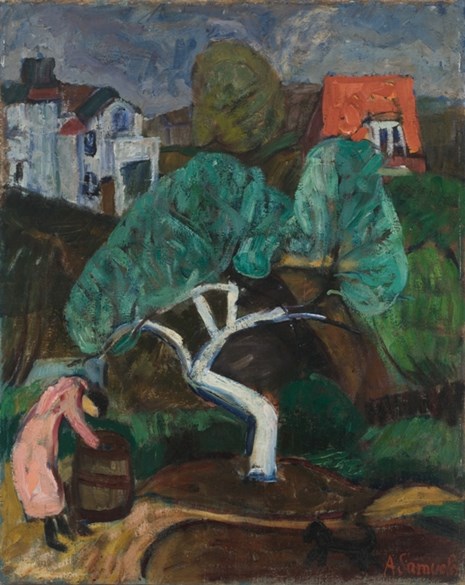The White Apple Tree by the Expressionist painter Antanas Samuolis occupies a special place in the history of Lithuanian art, as one of the most powerful pieces in the landscape genre. Presented at the first exhibition of the Ars group in 1932, it showed the talent of this young but mature artist.
The apple tree is the main focus of the painting, identified by its central position in the composition and by its lighter colour. The woman bending over a barrel, a dog, and details of buildings are secondary in terms of the composition and the content. The whitewashed trunk of the apple tree is the structural axis of the composition. Its expressively broken shape divides the other parts of the painting: the curve of the tree is echoed by the shape of the human figure, the foliage of the tree, and the curves in the relief of the soil. The solid and rationally structured composition of the painting is counter-balanced by the artist's spontaneous and expressive style, and by his broad and dynamic brush strokes in bright colours. The forms are treated in a generalised, primitivist manner, similar to Lithuanian folk art.
This painting evokes the unadorned everyday life of the suburbs. But the squalid scene that emerges is not without poetry: there is a mood of solitude and melancholy in it. The landscape is painted from life. The apple tree probably grew in the painter's family's garden in Kaunas. This adds an autobiographical aspect, hinting at the hard life of the artist, who suffered from material shortages and poor health.



